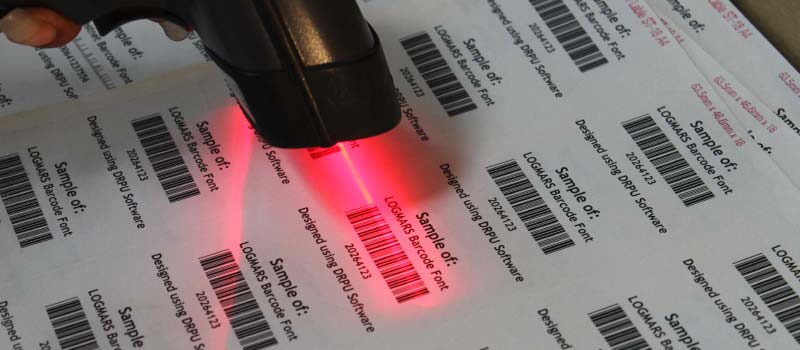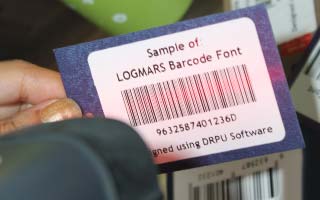
Steps For Scanning a LOGMARS Barcode
Scanning a LOGMARS barcode is a relatively straightforward process that involves using a barcode scanner to read the barcode and decode the information encoded within it. In this response, we will discuss the steps involved in scanning a LOGMARS barcode.
-
Choose a Compatible Barcode Scanner: The first step in scanning a LOGMARS barcode is to choose a compatible barcode scanner. Not all barcode scanners are capable of reading LOGMARS barcodes, so it is important to choose a scanner that is compatible with the barcode type being used. Most barcode scanners are capable of reading multiple barcode types, including LOGMARS, so this step is relatively easy.
-
Prepare the Scanner: Before scanning the barcode, it is important to prepare the scanner. This may involve connecting the scanner to a computer or mobile device, turning on the scanner, or setting the scanner to the correct mode.
-
Position the Scanner: Once the scanner is prepared, it should be positioned close to the barcode. The scanner should be held steady and perpendicular to the barcode to ensure that the entire barcode is captured by the scanner. It is important to position the scanner at the right distance from the barcode; most scanners have a recommended scanning distance that should be followed.
-
Scan the Barcode: To scan the barcode, simply point the scanner at the barcode and press the scan button. The scanner will emit a beam of light that will read the barcode and capture the information encoded within it. Some scanners may emit a beep or other sound to indicate that the barcode has been successfully scanned.
-
Verify the Information: After the barcode has been scanned, it is important to verify that the information captured by the scanner matches the information encoded within the barcode. This can be done by comparing the scanned information to the original data source or by using software to decode the barcode and display the information in a human-readable format.
-
Take Appropriate Action: Finally, once the information has been verified, appropriate action should be taken based on the information encoded within the barcode. This may involve updating a database, adding items to an order, or triggering an action in a workflow system.
Download and Install Barcode Software
In conclusion, scanning a LOGMARS barcode involves choosing a compatible barcode scanner, preparing the scanner, positioning the scanner, scanning the barcode, verifying the information, and taking appropriate action based on the information encoded within the barcode. By following these steps, companies can ensure that their LOGMARS barcodes are scanned accurately and the information encoded within them is used to improve their logistics and supply chain operations.
Types of Devices That Can Read LOGMARS Barcode
There are several types of devices that can read LOGMARS barcodes. In this response, we will discuss the different devices that can be used to read LOGMARS barcodes and their capabilities.
-
Barcode Scanners
Barcode scanners are the most common type of device used to read LOGMARS barcodes. These devices use lasers or cameras to scan the barcode and decode the information encoded within it. Barcode scanners come in various shapes and sizes, from handheld devices to fixed mount scanners used in conveyor systems.
-
Mobile Devices
Many mobile devices, such as smartphones and tablets, are capable of reading LOGMARS barcodes using their built-in cameras. Mobile apps can be downloaded that allow users to scan LOGMARS barcodes and decode the information encoded within them. This is particularly useful for workers in the field who need to scan barcodes on-the-go.
-
Embedded Scanners
Embedded scanners are devices that are integrated into other systems, such as vending machines or kiosks. These scanners are typically fixed mount and are used to scan barcodes on items that are being dispensed or purchased. Embedded scanners are often used in retail environments and are capable of reading LOGMARS barcodes as well as other barcode types.
-
Wearable Devices
Wearable devices, such as smartwatches and augmented reality glasses, are also capable of reading LOGMARS barcodes. These devices use camera sensors and augmented reality technology to capture and decode the barcode information. Wearable devices are particularly useful in situations where hands-free scanning is required, such as in a manufacturing environment.
-
Industrial Scanners
Industrial scanners are designed for use in harsh environments, such as warehouses or manufacturing plants. These scanners are typically more rugged than standard barcode scanners and are able to withstand dust, dirt, and moisture. Industrial scanners can be handheld or fixed mount and are capable of reading LOGMARS barcodes as well as other barcode types.
Conclusion: There are several types of devices that can read LOGMARS barcodes, including barcode scanners, mobile devices, wearable devices, industrial scanners, and embedded scanners. The choice of device will depend on the specific needs of the organization, as well as the environment in which the device will be used. It is important to choose a device that is capable of reading LOGMARS barcodes to ensure that the barcode information is captured accurately and used to improve logistics and supply chain operations.
LOGMARS Barcode Can be Used Internationally
LOGMARS barcodes are designed specifically for use by the US Department of Defense (DoD) and its suppliers. As a result, LOGMARS barcodes may not be recognized or supported by other countries, and their use may be restricted or prohibited outside of the United States. In this response, we will discuss the international use of LOGMARS barcodes in more detail.

Barcodes are used worldwide to improve supply chain efficiency and accuracy. To ensure interoperability and compatibility between different barcode systems, international standards have been developed. The most widely recognized international barcode standards are those developed by the International Organization for Standardization (ISO).
ISO has developed a series of standards for barcodes, known as the ISO/IEC 15416 series. These standards define the technical requirements for different types of barcodes, including their dimensions, printing specifications, and encoding rules. The ISO standards are used by many countries and organizations around the world to ensure that their barcodes are compatible with other systems.
Compatibility of LOGMARS BarcodesLOGMARS barcodes are based on the Code 39 barcode standard, which is widely recognized and supported internationally. However, the LOGMARS barcode format includes specific requirements and restrictions that are unique to the DoD and its suppliers. For example, LOGMARS barcodes must include a specific set of data elements, and the barcode must be printed using a specific type of printer and ribbon.
As a result of these restrictions, the use of LOGMARS barcodes outside of the United States may be limited. Other countries and organizations may not recognize the specific data elements used in LOGMARS barcodes, and they may not have the required printing equipment to produce the barcode correctly.
Alternative Barcode StandardsIn addition to the ISO/IEC 15416 standards, there are several other barcode standards that are used internationally. These include:
- GS1: GS1 has developed a series of barcode standards, including the GTIN (Global Trade Item Number) barcode, which is widely used in retail and consumer goods industries.
- EAN/UPC: EAN (European Article Number) and UPC (Universal Product Code) are barcode standards that are widely used in the retail industry. These barcodes are used to identify products and are recognized by most countries and organizations around the world.
- Code 128: Code 128 is a barcode standard that is widely used in logistics and supply chain management. This barcode can encode alphanumeric data and is recognized internationally.
Conclusion:While LOGMARS barcodes are based on the Code 39 standard, their use may be restricted or limited outside of the United States. Organizations that operate internationally may need to consider alternative barcode standards, such as those developed by ISO, GS1, or EAN/UPC. It is important to choose a barcode standard that is recognized and supported by the countries and organizations with which an organization operates to ensure maximum interoperability and compatibility
Cost of Implementing LOGMARS Barcode
The cost of implementing a LOGMARS barcode system can vary widely depending on several factors, including the size of the organization, the number of products being tracked, and the level of automation required. In this response, we will discuss the main cost considerations for implementing a LOGMARS barcode system.
- Software: Software is another significant cost factor when implementing a barcode system. Depending on the size and complexity of the organization, a variety of software applications may be required to support the barcode system, such as inventory management software, warehouse management software, or point-of-sale software. This software can cost anywhere between a few hundred and several thousand dollars per application.
- Maintenance and Support: Once the barcode system is implemented, ongoing maintenance and support are required to ensure that the system continues to operate efficiently. This includes regular maintenance of the hardware and software, as well as technical support to address any issues that arise. The cost of maintenance and support can vary depending on the level of support required and the size of the organization.
- Barcode Labels and Ribbons: Another cost associated with implementing a LOGMARS barcode system is the cost of barcode labels and ribbons. Barcode labels are required to print the barcode information, and ribbons are needed to print the labels. The cost of barcode labels and ribbons can vary depending on the size and quantity of labels required.
- Hardware: One of the main costs associated with implementing a LOGMARS barcode system is the hardware required. This includes barcode scanners, printers, and other equipment such as mobile devices or computers that will be used to capture and process barcode data. The cost of this hardware can range from a few hundred to several thousand dollars depending on the quality and capabilities of the equipment.
- Training: Implementing a barcode system often requires staff training to ensure that the system is used correctly and efficiently. The cost of training can vary depending on the number of staff that requires training, the level of expertise required, and the training method used. Training can range from a few hundred to several thousand dollars depending on the training method used.
- Integration with Existing Systems: If the organization already has an existing system for tracking inventory or sales, integrating the barcode system with these systems may be required. The cost of integration can vary depending on the complexity of the existing system and the level of integration required.
Conclusion:In conclusion, implementing a LOGMARS barcode system can involve significant costs, including hardware, software, barcode labels and ribbons, training, maintenance and support, and integration with existing systems. The cost of implementing a barcode system can range from a few thousand to several hundred thousand dollars depending on the size and complexity of the organization. It is important to carefully evaluate the costs and benefits of implementing a barcode system to ensure that it is cost-effective for the organization.